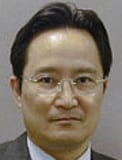Biography
Takashi Ohira received his PhD degree from Osaka University in 1983. He developed GaAs MMICs for communication satellites at NTT Yokosuka Laboratory, Japan. He founded two regional chapters for IEEE MTT Society (Kansai Chapter in 2006 and Nagoya Chapter in 2010). He is currently a Professor and Director of Research Center for Future Vehicle City at Toyohashi University of Technology, Japan. He is an IEEE Fellow, IEICE Fellow, and URSI Fellow. He presides over IEICE Tokai Section. He serves as an IEEE Distinguished Microwave Lecturer Emeritus. His recent activities include
[1] T. Ohira, “What in the world is Q,” IEEE Microwave Magazine Distinguished Microwave Lecture, vol.17, issue 6, pp.42-49, June 2016.
[2] T. Ohira, “The kQ product as viewed by an analog circuit engineer,” IEEE Circuits Systems Magazine, vol.17, issue 1, 1st Q 2017.
[3] T. Ohira, “A battery-less electric roadway vehicle runs for the first time in the world,” IEEE International Conference Microwave Intelligent Mobility, Nagoya, March 2017.
For his portfolio and portrait, visit
Presentations
Circuit Q factor as a basic but still ambiguous index for resonators and oscillators
Everyone agrees that Q factor is a key objective function in designing RF resonators and oscillators. Nevertheless, students, circuit engineers, and even microwave professors often encounter difficulties due to ambiguity in Q factor formulas. There are at least seven possible different ways to define Q factor based upon: 1) fractional 3 dB bandwidth; 2) power dissipation ratio to stored energy; 3) reflection phase to frequency slope; 4) dc power supply pushing figure; 5) output load pulling figure; 6) Leeson’s sideband noise spectrum; and 7) Adler’s injection locking range. We have to choose the right formula depending on the target of each development. The lecture explores the world of Q factors by giving their physical meanings and schematic examples. The formulas to be shown in the lecture are fundamental and so persuasive that the audience can apply with just a pencil and paper.
